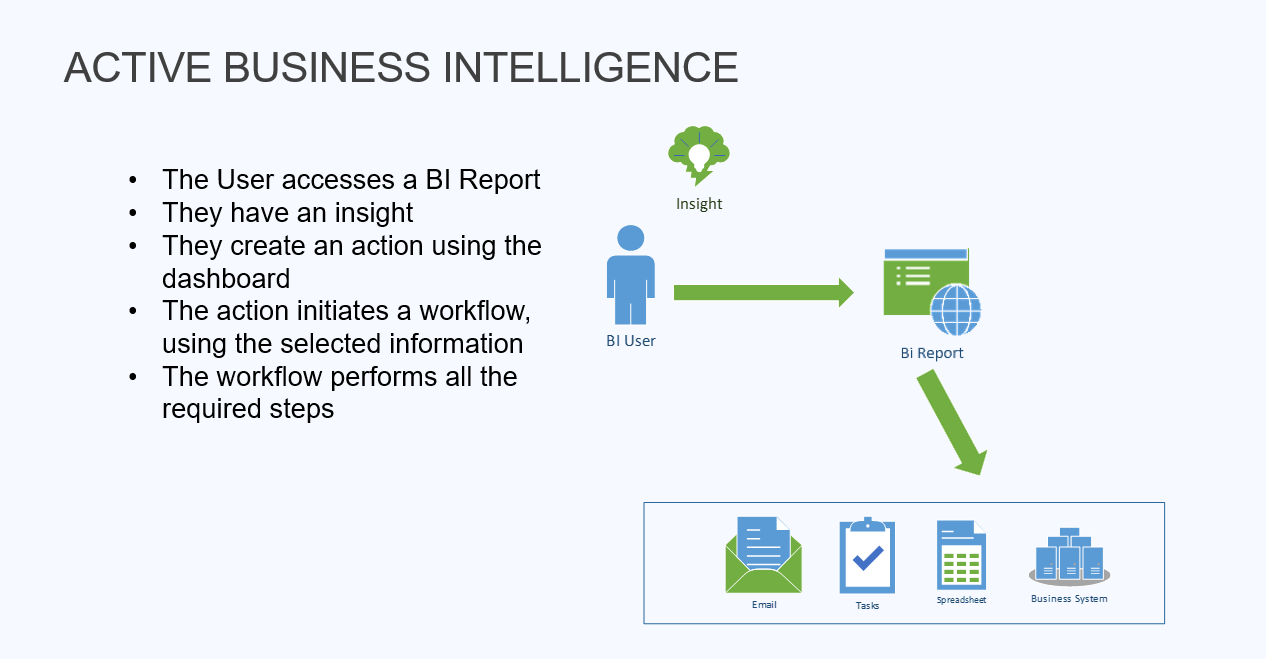The wisest mind has something yet to learn. — George Santayana
Active Business Intelligence is best explained as Passive BI with the addition of a Call to Action. Arbitrary actions can be automated and tracked with Active BI.
A Call to Action is typically implemented on the landing page for a web site, and in Active BI it is implemented in a very similar fashion so that the BI consumer can trigger the step in a BI business process.
There is now an abundance of APIs that permit the orchestration of business processes and Active BI can be used to trigger, modify and monitor those processes.

The Active Business Intelligence value chain includes an automated process step that implements the action required by the BI consumers in insight.
Active Business Intelligence is a natural result of digital transformation and is largely achievable using existing BI infrastructure. It creates a few additional issues beyond current concerns and will reduce risk, as business decisions and actions can easily be traced.
Context is the key ingredient of Active BI. Context is the information associated with insight.
The context for insight may be at the level of a row within a fact table or at a higher level of aggregation such as a dimension: a product or customer, a time period such as month-to-date or a combination of all of these.
The BI consumer then adds information to the insight context to initiate an action. It should be noted that an Active BI implements Process Automation. The added ingredient is the human decision-making factor. Active must consider context, integrate the user input and then trigger the Automated Process.

Actioning the Insight
Actioning an insight is pure process automation using existing APIs. Several issues must be considered, partly due to the human factor in the process.
When an insight task is actioned, feedback needs to be provided to update the insight’s status, typically this would involve logging the action to a common log and updating the source data to reflect the updated status.
It may also be necessary to check for duplicate actions submitted in proximity. Even a system updating in real-time can have these issues. The action will typically be a flow of steps. Initiation of the flow will be confirmed after the Call to Action is submitted.
As the flow executes, steps are logged in the same way as normal process automation. It is possible that the action will be the same as a standard automation flow, such as a refund, with some transactions requiring human intervention.